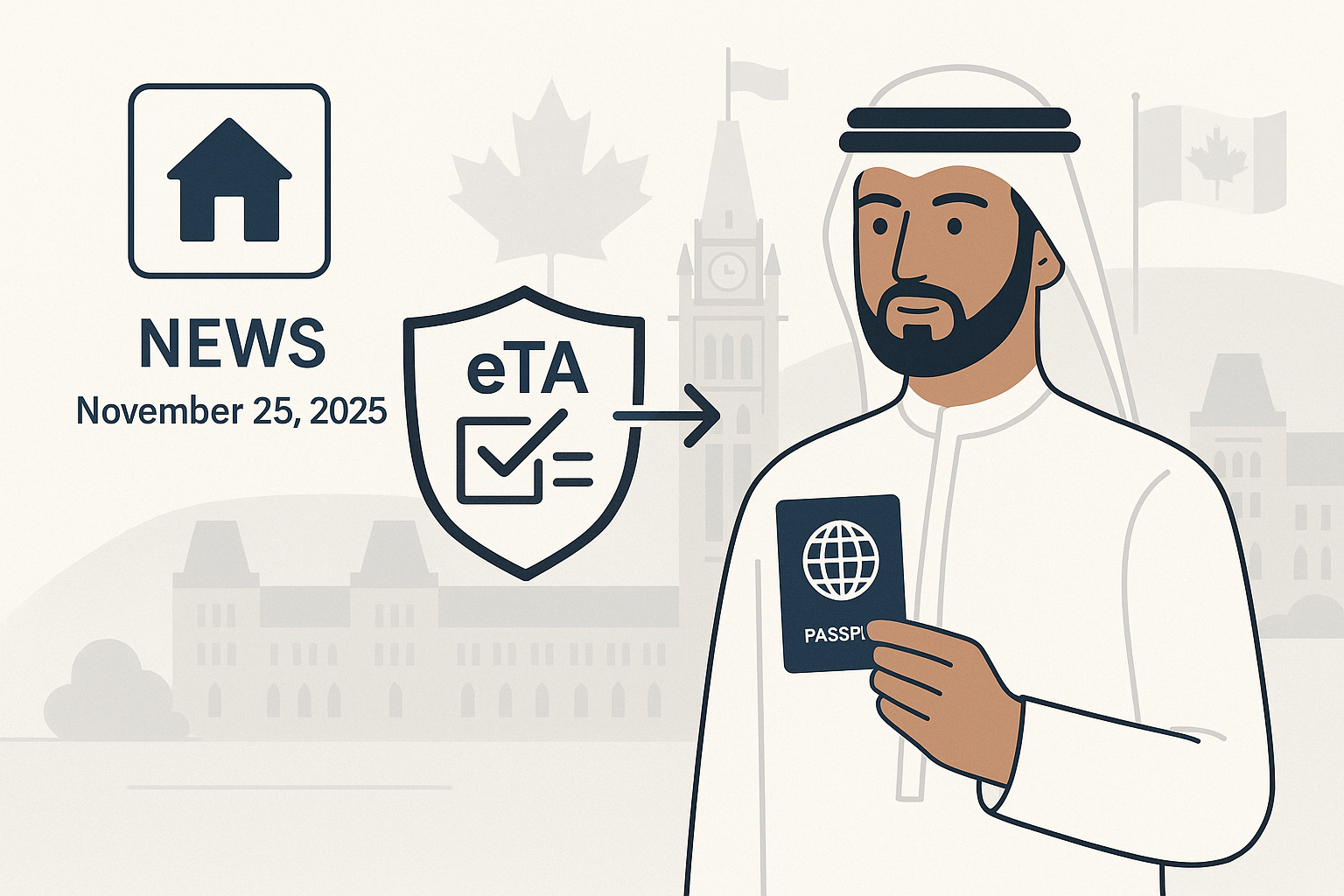
Canada's 2025 Budget stabilizes permanent resident admissions at 380,000 (2026–28) and raises the economic-class share to 64% while cutting temporary resident inflows by about half, especially students and workers. It links immigration targets to housing and infrastructure capacity, introduces a selective one‑time 33,000 TR-to-PR pathway, and funds credential recognition and IRCC modernization.
Soheil Hosseini
November 4, 2025
Jurisdiction
Federal
Week
Week 45
Impact
High
Programs Affected
Canada’s 2025 budget ties immigration to housing, halves temporary entries and prioritizes skilled migrants
Summary: Canada’s 2025 Federal Budget recalibrates immigration by stabilizing permanent resident admissions at 380,000 for 2026–2028, increasing the economic share to 64%, and cutting temporary resident inflows by nearly half, while linking targets to housing and infrastructure capacity and introducing a one-time TR-to-PR pathway.
Date of update: 2025-11-04 | Source: News Article Canada has announced a major reset of immigration policy in Budget 2025, shifting from rapid expansion to managed growth tied to housing, infrastructure, and economic capacity. The plan maintains high permanent resident (PR) intake while sharply reducing temporary residents (TRs), especially international students and temporary foreign workers, and prioritizes skilled economic migration. Permanent residents: stable levels, economic tilt
- PR admissions set at 380,000 for 2026, 2027, and 2028, signaling stabilization rather than continued growth.
- The economic class share rises from 59% to 64%, adding roughly 20,000 spaces for skilled workers, PNP nominees, and business immigrants, with corresponding reductions in family and refugee allocations.
- This rebalancing aims to address labor shortages in healthcare, construction, and technology. Temporary residents: sharp reductions
- Budget 2025 projects TR inflows of 385,000 (2026), 370,000 (2027), and 370,000 (2028)—about a 50% drop compared with 2025 levels.
- Estimated 2026 category impacts: Workers ↓ ~37%; Students ↓ ~49%.
- Ottawa frames the cuts as necessary to “restore balance” so immigration does not outpace housing and public services. New TR-to-PR pathway (2026–2027)
- A one-time measure will offer up to 33,000 work-permit holders an accelerated route to PR, prioritizing those with established community ties, tax records, and economic contributions.
- The approach mirrors the 2021 TR-to-PR initiative but is expected to be more selective and data-driven. Linking immigration to housing and infrastructure
- For the first time, immigration targets will be set alongside housing construction, transit, and local infrastructure projections, with closer collaboration across provinces and municipalities.
- The government acknowledges that rapid population growth has strained housing availability and service capacity. Other key measures
- $100M for foreign credential recognition to speed licensing in health care, trades, and tech.
- $1.2B for IRCC digital modernization to improve processing and reduce backlogs.
- $250M for stronger compliance oversight and intergovernmental data-sharing.
- Continued cap on study permits and tighter PGWP eligibility. Programs affected
Express Entry (EE-FSW, EE-FST, EE-CEC), EE-PNP and provincial streams (OINP-EE-Trade, OINP-EE-Health, OINP-EE-Tech, OINP-EE-Other, OINP-EE-French, BCPNP), PGWP, Study Permit, Work Permit, TRV. Independent analysis: likely impacts
- Positive:
- Housing and services relief from slower TR growth; clearer planning via capacity-linked targets.
- Faster, more predictable processing if digital investments deliver; enhanced integration via credential recognition.
- Greater certainty for employers in priority sectors through a higher share of economic PRs.
- Negative:
- Universities and colleges may face revenue and enrollment pressures from continued study-permit caps and tighter PGWP rules.
- Employers reliant on short-term labor (hospitality, retail, some agri-food) may see shortages and higher costs.
- Family and humanitarian pathways could feel squeeze as economic share rises.
- Risk that a 33,000-seat TR-to-PR window is oversubscribed, creating competition and equity concerns among eligible workers.
- Considerations for counsel and stakeholders:
- Expect stricter compliance and monitoring; align recruitment and admissions with new capacity-linked planning.
- Prioritize economic-class strategies (Express Entry, PNP) over temporary or student-first routes.
- Prepare for program-specific recalibrations to PGWP and work permits, and monitor provincial allocations. Outlook
Canada is not closing its doors; it is rebalancing. Stable PR levels with a stronger economic focus, fewer temporary entrants, and capacity-linked planning mark a structural shift. Stakeholders should watch for IRCC program updates and provincial quotas that operationalize these budget directives.
Tags: Canada Immigration, Budget 2025, IRCC, Express Entry, Provincial Nominee Program, Temporary Residents, International Students, PGWP, Work Permit, TR-to-PR, Housing, Infrastructure, Credential Recognition, Digital Modernization, Compliance, Economic Immigration
Categories
Share This Post
Stay Updated with Immigration News
Get the latest updates on Express Entry draws, OINP invitations, policy changes, and more delivered to your inbox.
We respect your privacy. Unsubscribe at any time.
Related Articles

Foreign Workers Start Work
Canada’s temporary public policy (IRPA s.25.2), effective May 27, 2025, allows eligible temporary foreign workers in Canada to begin work for a new employer or occupation while a new TFWP or IMP work-permit application is pending. Workers must have valid temporary resident status, submit the work-permit application and an IRCC exemption request via the designated channel; approvals are discretionary and end when the application is decided or withdrawn.

Qatar Added to eTA
Canada has made Qatari nationals visa‑exempt and added Qatar to the eTA program; eligible travelers must obtain an eTA for air travel to Canada. This replaces the TRV for air arrivals and is intended to streamline short‑term travel and ties between the countries.

Family Open Work‑Permit Update
IRCC updated Work Permit instructions (Nov 17, 2025): for applications received on or after Jan 21, 2025, dependent children are ineligible for family open work permits under C46/C48 and spouses of TEER 4 workers are ineligible under C47 when filed outside R205(c)(ii) reciprocal agreements. Related military family instructions and documentary/approval/refusal guidance were aligned and expanded.

OINP discretion expanded
Ontario now allows the OINP Director to suspend intake or return applications (with full fee refunds) before nomination based on quota, backlogs, federal processing, labour‑market needs and housing pressures (in force July 2025). The change raises outcome uncertainty, increases evidentiary standards for job offers and Ontario ties, and prioritizes alignment with provincial priorities across affected OINP streams.